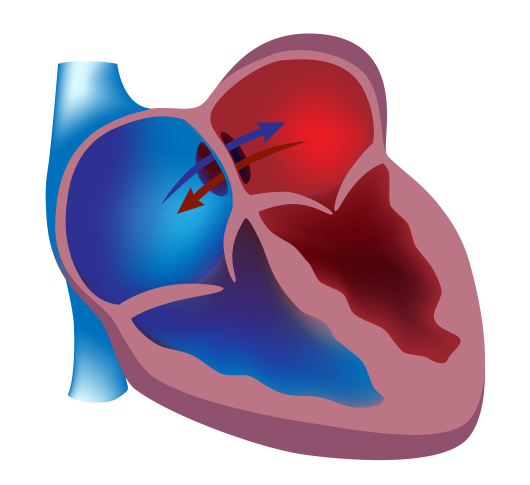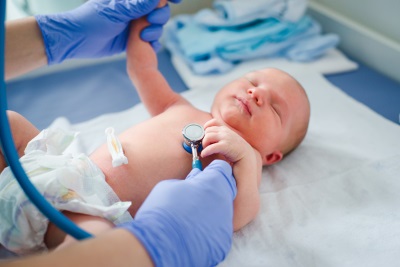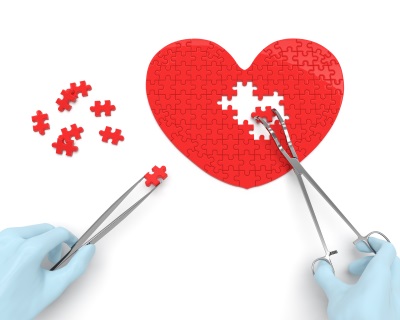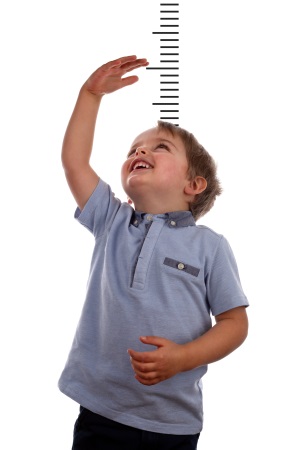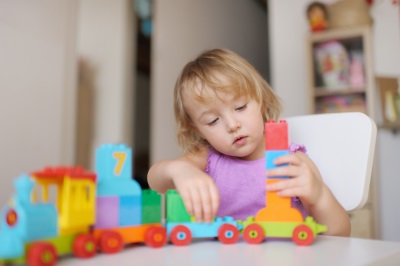CHDs and Children
What are CHDs?
CHD stands for congenital heart defect or disease. A CHD is a problem with your child’s heart that is found at birth or sometimes before birth. There is more than one type of CHD and some are more serious than others. Heart defects are the most common birth defect and affects nearly one in every 120 babies born. Serious CHDs are often called critical congenital heart defects or critical CHDs, because they typically require procedures or surgery within the first year of a baby’s life. About 1 in 400 births is affected by a critical CHD.
Click here for more information about some common congenital heart defects.
How are CHDs Diagnosed?
Before your baby is born, your doctor may look at your baby with an ultrasound. One of the things your doctor will look for is to see if there is anything potentially wrong with your baby’s heart; however, not all heart defects can be caught using an ultrasound. Doctors can also use a fetal echocardiogram to see the structure of the baby’s heart and watch how it functions. In Utah, within the first 24-48 hours after your baby is born, a painless and non-invasive screening procedure, called pulse oximetry screening, is now required to be performed at all Utah birthing facilities. A failed pulse oximetry screening on a newborn baby notifies the doctor that some extra tests are needed to see if there is anything wrong with the baby’s heart. Some other diagnostic methods your doctor might use include listening for murmurs with a stethoscope, echocardiograms, electrocardiograms, chest x-ray, cardiac catheterization, or cardiovascular MRI.
To learn more about pulse oximetry screening in Utah, click here.
Treatments and Procedures for Children with a CHD
Your child may undergo different treatments or procedures depending on the type of heart defect he/she has and how severe it is. Some of the most common treatments or procedures include catheterization techniques, open-heart surgery, heart transplant, medications.
Growth of your Child with CHD
If you have a child with a congenital heart defect, you may notice that he/she grows a little slower than children his/her age. They might also take longer to achieve developmental milestones, such as sitting up on their own, crawling, or becoming potty trained. Therapists such as occupational therapists (OT) and/or nutritional specialists may be needed to help your child maintain weight and continue to grow. Regular checkups with your child’s pediatrician will help you and your doctor to monitor your child’s growth and development. If you have any questions or concerns about your child’s growth, consult your family doctor or child’s pediatrician for more information.
Development of your Child with CHD
In general, children with a CHD function at age-appropriate levels; however, some children may be at higher risk for intellectual and language disabilities, attention disorders, or deficits in gross motor skills (your child’s ability to control different parts of his/her body). This may include difficulties playing with certain toys, physical activity, or poor hand-eye coordination. Behaviorally and emotionally, your child will act like other children his/her age. Depending on the child, psychological and emotional issues related to their CHD can emerge, but this typically doesn’t occur until later in adolescence (click here for more information about CHDs in Adolescence) when your child may become more aware of his/her condition or faces certain challenges.
If you have any concerns about any aspect of your child’s development, consult your family doctor or child’s pediatrician for more information. Your doctor may get you in touch with another specialist, such as an occupational or speech therapist, or psychologist to help with difficulties in motor skills or behavioral issues.
School and Learning
Most children with CHD attend school and fully participate. Some children may have delays in learning and may require special educational services. Check with your child’s physician, school, and/or school district to see what services are available for him/her and how they best can help your child to learn and succeed.
Check out the Utah Parent Center for more information about school services available in Utah.
Parenting and Finding Support
Raising a child with a CHD can be a challenging process. Resources and support from the medical community and parent groups are available to assist families affected by CHD. Knowing what to expect can help your family gain an understanding of your child’s growth and development as well as prepare your family for dealing with the medical challenges and social and family issues, which may occur during childhood.
As your child continues to grow, you may find that each age and stage has its own unique challenges. If you have other children, it’s also important to make sure that their feelings, uncertainties, and fears are adequately and appropriately addressed. But, you don’t need to do it alone. If you are experiencing troubles with stress, depression and/or anxiety, seek care from a mental health professional. There is also a large support network of families in Utah who have a child or family member with a CHD that can relate.
Click here to see the support groups in Utah and around the country.
Looking to the Future
Children born with a congenital heart defect are living longer lives due to advances in knowledge, medical treatment and technology. Current estimates from research indicate that approximately 2 million people are living with a CHD in the United States. Children and adolescents with a CHD must visit their pediatric cardiologist on a regular basis to check for certain health problems, such as arrhythmias (irregular heart beat), or infections or weakness of the heart muscle. As your child continues to grow into adolescence, it will be important to think about transitioning and transferring their care to an adult congenital heart specialist. See the Adolescents and Adults sections for more information on transition of care.
Additional Resources
References
American Heart Association. CHD’s impact on children. 2018. American Heart Association. http://www.heart.org/HEARTORG/Conditions/CongenitalHeartDefects/TheImpactofCongenitalHeartDefects/CHDs-Impact-on-Children_UCM_307115_Article.jsp#.WoympainGUl. Accessed: February 20, 2018.
Division of Birth Defects and Developmental Disabilities, Centers for Disease Control and Prevention. Congenital Heart Defects (CHDs). 2018. Centers for Disease Control and Prevention website. https://www.cdc.gov/ncbddd/heartdefects/index.html. Accessed February 22, 2018.
Hetherington R. The child with congenital heart disease. 2009. The Hospital for Sick Children. http://www.aboutkidshealth.ca/En/ResourceCentres/CongenitalHeartConditions/LookingAhead/TheChildWithCongenitalHeartDisease/Pages/default.aspx. Accessed February 20, 2018.
Mayo Clinic. Congenital heart defects in children: diagnosis and treatment. 2018. Mayo Clinic. https://www.mayoclinic.org/diseases-conditions/congenital-heart-defects-children/diagnosis-treatment/drc-20350080. Accessed February 22, 2018.

